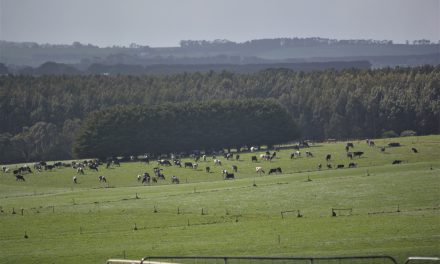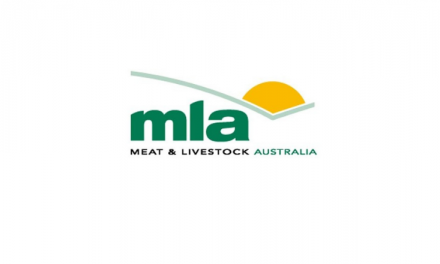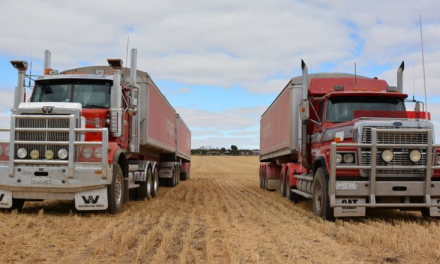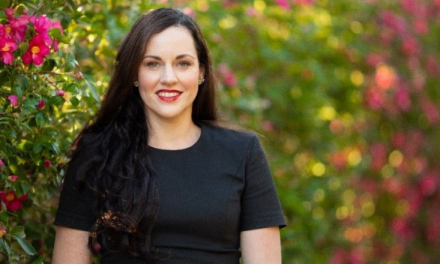Tough seasonal conditions and unfavourable weather in Western Australia have offset resilient cattle and lamb prices to see the National Australia Bank (NAB) Rural Commodities Index fall slightly by 1 per cent in September.
The NAB Rural Commodities Wrap shows frost, heat and dry weather in Western Australia and South Australia have affected winter crop conditions and will place forecast yields under pressure.
NAB Agribusiness Economist, Phin Ziebell (pictured), said the latest Grains Industry of Western Australia’s crop outlook predicts a wheat volume of 6.8 million tonnes, down from the 7.4 million tonnes forecast in August.
“This is well below ABARES’ latest Western Australia crop outlook, which forecast an 8 million tonne wheat crop and highlights the downside risks for harvest,” Mr Ziebell said.
“A total wheat crop forecast of below 20 million tonnes is now essentially guaranteed. However, if Western Australia produces 7 million tonnes of wheat, and Victoria and South Australia both produce 3.5 million tonnes, a 16-17 million tonne crop is not out of the question, given the poor conditions in New South Wales (NSW).”
The Bureau of Meteorology’s three-month rainfall outlook points once again to below average rainfall for most of the country. That said, the forecast shows above average rainfall for the Pilbara and Kimberley regions in the three months to December.
“Cattle and lamb markets remain reasonably sound despite these challenging seasonal conditions,” Mr Ziebell said.
“While the Eastern Young Cattle Indicator (EYCI) has dropped to 468c/kg, this represents a fairly resilient price amid drought conditions.
“Premiums for quality finished cattle remain due to short supply, and poor conditions in many areas are ultimately a brake on prices. Continued elevated female slaughter points to a herd in liquidation mode.
“We don’t expect much upside for the EYCI unless NSW and Queensland see some very good rain.”
Lamb prices have retreated somewhat from their record peaks earlier this year but remain strong, sitting at 795c/kg for trade lamb.
“Looking ahead, we are cautious as to whether lamb prices will sustain these levels throughout spring, although there is a possibility that supply will remain constrained, keeping prices elevated,” Mr Ziebell said.
“The hot trade lamb price is driving growth in containment feeding, which may see traditional seasonal factors become less influential over time, however we are nervous around high input costs should prices fall from here.
“Wool prices have dropped recently and are expected to remain at these levels without any resolution of US-trade tensions, which remains a key risk for the sector.”
Due to ongoing challenging conditions, eastern Australia will likely face another season of grain imports from Western Australia and overseas, with new season crop prices reflective of this reality.
“We anticipate feed prices will remain high this summer and predict a good deal of crop in South Australia and NSW will be cut for hay. Elevated lot feeding will sustain feed demand into 2020,” Mr Ziebell said.
Domestic feed prices rose 1.9 per cent in August and overall the NAB weighted feed grain index is at $310/t.
“Farm input prices are in an interesting position at present, with the lower AUD and dry season likely to put upward pressure on input costs, while the impact of recent attacks on Saudi oil refinery infrastructure saw oil prices spike almost 20 per cent,” Mr Ziebell said.
Temporary water prices in the Murray-Darling basin continue to surge, sitting at around $700-800/ML, reflecting declining inflows and very low allocations.
“This will continue to put pressure on northern Victoria irrigated dairy, with input costs an ongoing concern. However strong farmgate prices and a good season has seen confidence return to south-west Victoria, and to a lesser extent, Gippsland,” Mr Ziebell said.
“Global Dairy Trade auction results have improved over the past two months and the lower AUD should support processors offering strong farmgate prices to maintain milkflow.”
On a state-by-state basis, Queensland was the best performer on the Index in August, recording a 1.7 per cent increase, while Tasmania was flat. NSW, Victoria, South Australia and Western Australia were all negative, with Western Australia the weakest performer on the back of a tough grain season.
NAB forecasts two further cash cuts by the Reserve Bank of Australia, down to 0.5 per cent by December 2019, and predicts that the AUD will likely remain in the USD0.60s for some time.








